Leporicypraea mappa (Linnaeus 1758):
The Western Indian Ocean subspecies
by Randy Bridges
The taxonomic status of the Leporicypraea mappa (Linnaeus 1758) subspecies of the Western Indian Ocean are examined and discussed in our recent article, Lorenz & Bridges (2014). Previous to this, only two subspecies were recognized from this geographic region in Lorenz (2002): Leporicypraea mappa rosea (Gray 1824), and the more southern (type locality Natal), Leporicypraea mappa aliwalensis Lorenz 2002. Even then, differences between the shells from the more eastern Mascarenes (Mauritius, La Reunion, St. Brandon, and Rodrigues) and the western populations were already noted, (pg.31).
Comparison of the morphological characteristics of the two populations of L. m. rosea shows distinct and separable features. Applying the "cowry formula" of Bridges & Lorenz (2013) reveals differences in size and mass ratio, with the western shells being characteristically larger with a lower mass ratio (relatively lighter in weight), compared to the Mascarene shells. The shape is generally cylindrical with a pattern consisting of mostly fine longitudinal lines in the western shells versus a rather oval and broad shape with a coarser and less longitudinally aligned pattern in the Mascarene specimens as demonstrated in Figures 1, 2 and 3 below. Most notable among the differences is the much brighter purple blotching and basal color even on older and faded Mascarene shells that is generally a greyish-brown color and less prominent in older western specimens. Leporicypraea m. aliwalensis, (Figure 2, bottom row), can be distinguished by the less cylindrical shape, the much coarser dorsal pattern, and the generally brown spotting.
An interesting feature of most all taxa in the L. mappa complex is the visible red fluorescence emitted by the shells when illuminated by longwave ultraviolet (UV) light of around 400 nanometers wavelength (Figure 3, top row, middle column). The only member of the group that does not display this colorful characteristic are the shells from the Mascarene population (Figure 3, bottom row, middle column). They may display slight fluorescence toward the extremities especially in fresh shells, but never as prominent and noticeable as in any other in the complex. The source of the red fluorescence is the presence of particular chemical compounds called porphyrins in the biomineral makeup of the shell. The ultimate cause for their presence and the biological function they may serve is still under study. The presence or absence of fluorescence indicates differences in the biomineralization processes involved in shell production, which is under genetic control. For this reason, we acknowledge the phenomenon of fluorescence as a valid taxonomic characteristic.
Combined, the morphological, color, pattern, and fluorescence characteristics led us to separate the two Western Indian Ocean populations formerly called L. m. rosea, into two subspecies. A thorough study of the original descriptions and related literature reveals that the name rosea, without any illustration or precise locality data, cannot be applied to either subspecies and therefore becomes a nomem dubium. The next earlier available name, subsignata Melville 1888 "(...) becomes the name for the Mascarene populations, as it explicitly refers to a shell from St. Brandon, north of Mauritius. The illustration Melville refers to is in Sowerby's Thesaurus figures 24, 25 (...) and clearly shows a shell likely to be of that origin." (Lorenz & Bridges, 2014, pg. 20). Thus, we described and named the western population as Leporicypraea mappa ultraviola. The holotype and paratype 39 are shown in Figure 1, below.
We now recognize 3 subspecies of L. mappa in the Western Indian Ocean:
1. L. m. ultraviola Lorenz & Bridges 2014.
2. L. m. subsignata (Melville 1888).
3. L. m. aliwalensis Lorenz 2002.
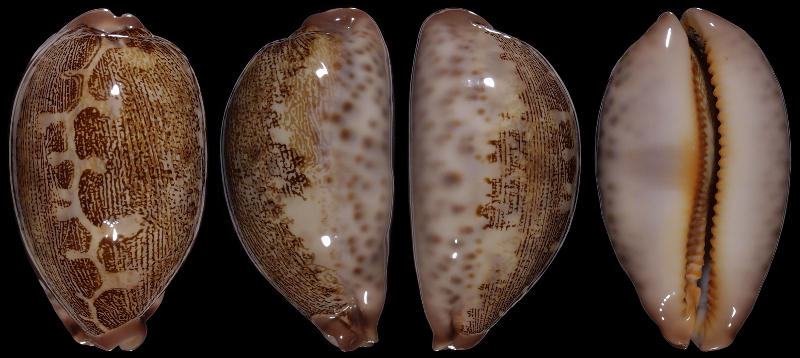
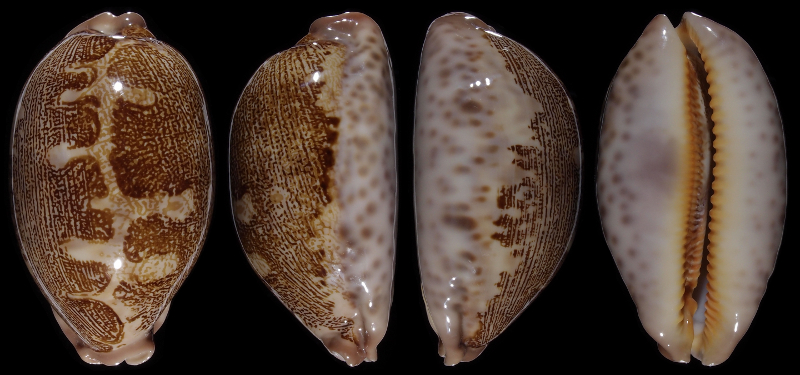
Figure 1. Top row: Leporicypraea mappa ultraviola, holotype, 68.6 mm., northern Madagascar. Bottom row: L. m. ultraviola, paratype 39, 68.4 mm., southern Madagascar.
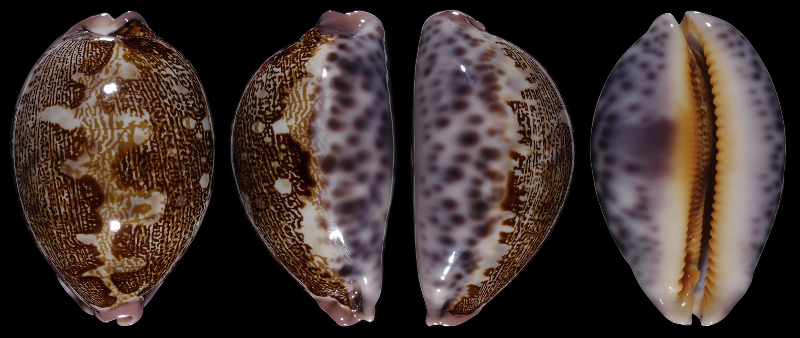
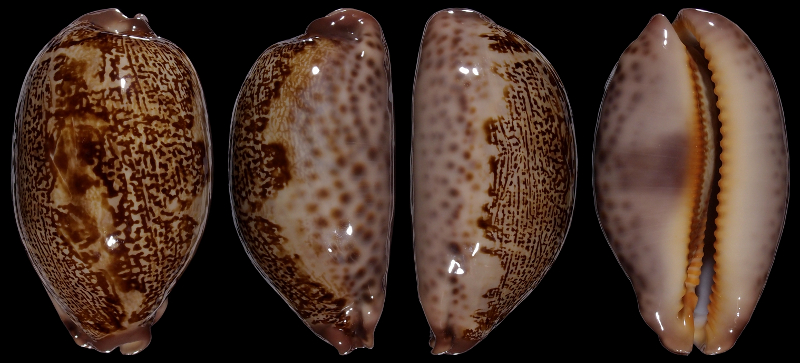
Figure 2. Top row: Leporicypraea mappa subsignata, fresh specimen from St. Brandon, 66.1 mm. Bottom row: Leporicypraea mappa aliwalensis, Natal, 68.1 mm.
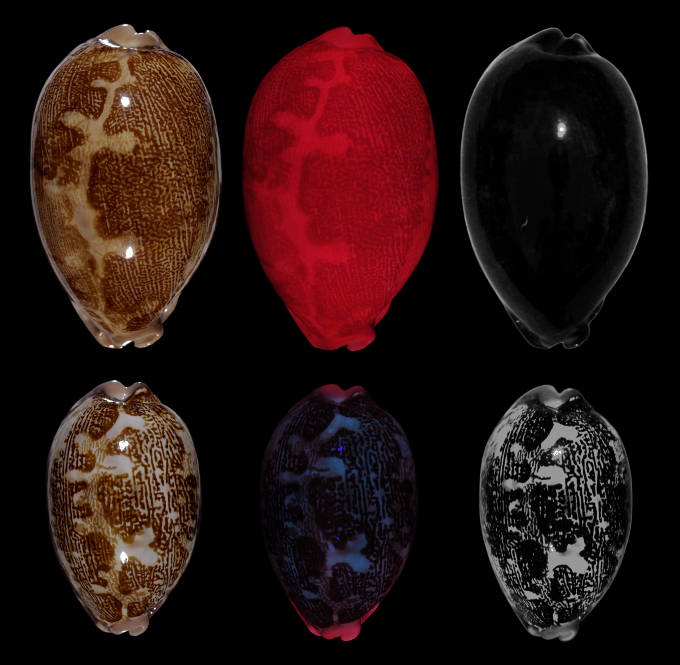
Figure 3. Top row: L. m. ultraviola. Bottom row: L. m. subsignata.
Column 1: Photo in visible light.
Column 2: Photo of fluorescence in UV illumination.
Column 3: Photo of reflected UV illumination.
References
Bridges, R. J. & Lorenz, F. (2013). A Revised morphometric formula for the characterization of cowries. Conchylia, 43 (1-4): 23-36.
Lorenz, F. (2002). New Worldwide Cowries. Descriptions of new taxa and revisions of selected groups of living Cypraeidae (Mollusca: Gastropoda). Schriften zur Malakozoologie 20: 1–292, 40 pls., also appeared at ConchBooks, Hackenheim..
Lorenz, F. & Bridges, R.J. (2014). The subspecies of Leporicypraea mappa (Linnaeus 1758) from the Western Indian Ocean (Gastropoda: Cypraeidae). Conchylia 44(3-4): 17-26.
